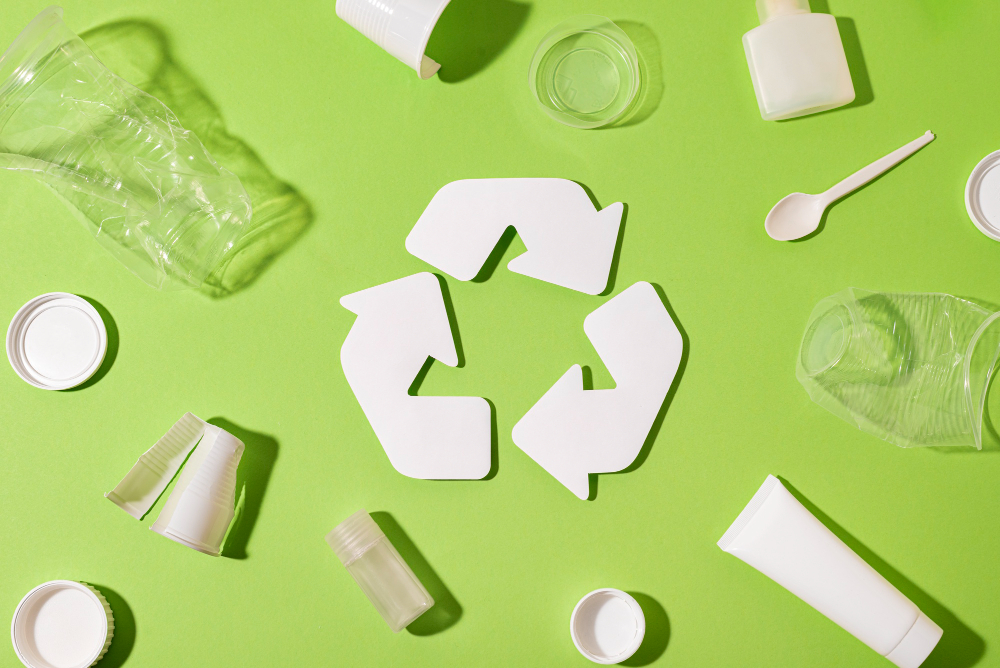Bioplastics: What they are And their Applications | Doing Business With Bioplastics
by Ankita Tripathy Green Business 08 November 2024

Bioplastics represent one of the most promising innovations in the search for sustainable, environmentally friendly materials.
A response to the urgent need to reduce dependence on fossil fuels and the ecological impact of traditional plastic materials, bioplastics are produced using renewable resources and can have a much more sustainable life cycle.
Bioplastics mainly come in two categories based on biodegradability, but both offer numerous advantages. Thanks to their unique characteristics, bioplastics find broad application in innovative sectors such as medicine, 3D printing, and green technologies.
Let’s explore in detail what they are and the benefits of using them.
What are Bioplastics?
Unlike conventional or petroleum plastics, bioplastics come from renewable materials like corn starch, sugarcane, cellulose, potatoes, and other plants.
These materials are less harmful to the environment and contribute to reducing CO₂ emissions.
It’s important to note that not all bioplastics are biodegradable: the term “bioplastic” includes both biodegradable plastics (which naturally decompose through the action of microorganisms) and non-biodegradable plastics that are nonetheless made from renewable resources.
Below are some of the main characteristics of bioplastics:
- Production from renewable raw materials
They are produced using plant-based materials that can be grown again, making them available long-term.
- Flexibility.
Bioplastics offer various properties, such as rigidity, elasticity, or durability, depending on the specific application needs.
- Reduction in CO₂ emissions.
The production process of bioplastics generates less CO₂ compared to that of petroleum-based plastics.
In this way, bioplastics represent a sustainable and innovative solution for producing plastic materials.
But what are the actual benefits of choosing this material?
Benefits of Bioplastics
The use of bioplastics offers numerous benefits, including:
- Reduction of environmental impact
Bioplastics reduce dependence on fossil resources and, in the case of biodegradable ones, help reduce long-term plastic waste.
- Lower carbon emissions
During production, bioplastics can lower greenhouse gas emissions, especially those derived from crops that absorb CO₂ as they grow.
- Compostability.
You can compost some bioplastics under ideal conditions. Thus, they can easily become part of the soil’s nutrient cycle.
Applications of Bioplastics
Bioplastics find applications across various business sectors due to their versatile properties.
In the food packaging sector, they are used to produce biodegradable containers, disposable tableware, and plastic films for food products.
In agriculture, biodegradable bioplastics are used for mulching films, covers, and containers, reducing plastic pollution in the fields.
In the medical field, bioplastics are used for single-use devices like syringes and bandaging materials, as well as resorbable temporary implants, which reduce the need for follow-up surgeries.
In electronics, some companies use them in phone and laptop casings, taking advantage of polymer materials reinforced with plant fibers for added durability.
The automotive industry uses bioplastics for interior components like panels and dashboards, helping reduce vehicle weight and improve fuel efficiency.
Finally, in the fashion and textile industry, bioplastics are being tested for biodegradable and compostable fibers, providing an alternative to traditional synthetic fibers.
In each of these sectors, specialized dryers designed specifically for these materials are essential. You can learn more about the most effective options in this article.
Limitations And Challenges of Bioplastics
While promising, bioplastics face significant challenges in their adoption.
Among these are:
- High production costs.
Production costs for bioplastics can be higher than those of traditional plastics, slowing their large-scale adoption.
- Structural limitations.
Some bioplastics lack the strength and durability of conventional plastics, making them less suitable for certain applications.
- Industrial composting requirements.
Many biodegradable bioplastics require specific conditions to break down, which are only available in industrial composting facilities. Without proper disposal, they may not degrade within the expected timeframes.
Bioplastics offer a tangible response to the environmental challenges posed by the intensive use of conventional plastics, providing more sustainable and innovative solutions.
Thanks to ongoing research and innovation, bioplastic applications are growing rapidly, opening new opportunities across various sectors.
For these solutions to truly contribute to a greener future, however, it will be essential to develop adequate disposal and composting infrastructure and encourage policies that incentivize the use of sustainable materials.
Bioplastics: Understanding the Business Market And the Scopes
The bioplastics market is growing at a steady rate. In 2023, it reached a valuation of USD $ 96.6 billion in 2023, and from the period of 2023 to 2033, the bioplastics market is about to grow at a compound annual growth rate (CAGR) of 30.2%.
Further, the growth in the bioplastics market is an example of how a circular economy is the order of the day. The main focus of the circular economy is to reuse essentials, reduce wastage, and recycle them.
Moreover, many leading investors are showing active interest in the growth and development of the bioplastics sector. So, with a boost in the research sector, we are likely to have innovative bioplastics solutions.
In Latin America and Asia Pacific, rapid urbanization is taking place and industrialization is a crucial element in it. With the growth of agricultural, construction, and consumer industries in these areas, there is, of course, an increasing demand for bioplastics.
Further, there is a potential for building a full-fledged packaging industry based on the use of bioplastics.
Research says that 43% of the bioplastics manufactured across the globe are used in the packaging industry. So, if you want to build a bioplastics business, you can choose areas like goods and food packaging.
You can also explore the following territories to build a profitable business around the use of bioplastics.
- Prosthetics in the medical industry
- Prosthetics in the beauty and entertainment industry
- Disposable containers for food items
- Toys
- Catering products
So, the use of bioplastics in business is an economically and environmentally viable idea.
Bioplastics: Entering the World of Fashion And Lifestyle Businesses
Bioplastics have made a grand entry into the world of fashion, with names like Puma and Versace offering clothing lines made of bio-polyester.
In fact, Kartel, a space furniture and lifestyle brand from Singapore, was in the news a few years back for launching its bioplastics furniture. This was a collaborative effort to mark the 70th anniversary of the brand.
Read More:



































































































